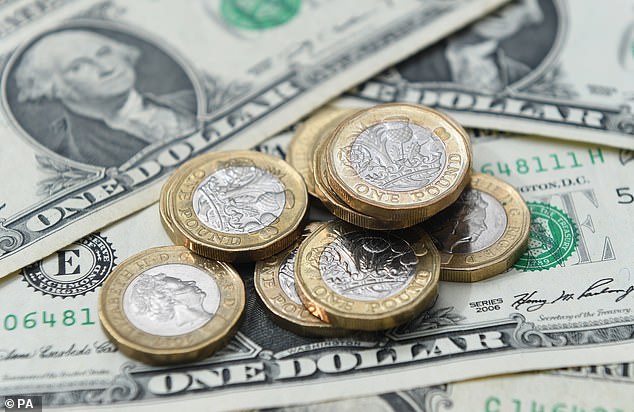Table of Contents
The pound rose above $1.30 for the first time in a year yesterday after higher-than-expected inflation figures dented hopes for interest rate cuts.
It hit 1.19 euros against the euro, its highest level in almost two years, giving a boost to British tourists.
Meanwhile, markets were caught up in the path of interest rates on the other side of the Atlantic, where hopes of a cut by the US Federal Reserve are growing.
This has sent gold prices to $2,483 an ounce, a new all-time high.
The rise is taking off: the pound yesterday exceeded 1.30 dollars for the first time in a year and reached 1.19 euros against the euro, its highest level in almost two years.
In Britain, official figures showed inflation held firm at 2 percent (the Bank of England’s target) in June.
But economists had expected inflation to fall to 1.9 percent, and services inflation, an underlying measure closely watched by the Bank of England, remained at a stubbornly high 5.7 percent.
This led traders to lower expectations of a rate hike in the summer.
Market pricing had suggested a 50/50 chance of a cut in August, but that probability has since dropped to just over one in three.
The persistence of inflation was partly attributed to the “Taylor Swift” effect. Figures from the Office for National Statistics (ONS) showed that rising hotel prices exerted the most upward pressure on inflation.
Economists suggested this was because fans booked rooms in London, Edinburgh, Liverpool and Cardiff for the American singer’s Eras tour.
But experts argued there was not yet enough evidence to justify a cut when UK interest rate-setters meet again in two weeks.
Rob Wood, chief UK economist at Pantheon Macroeconomics, said the “sheer magnitude” of the services inflation figure, compared with the Bank of England’s expectations that it would be close to 5 percent at the moment, would “leave rate-setters uncertain” about where it was headed.

“It’s harder to make the case for cutting interest rates when services inflation didn’t slow in June and has barely slowed since February,” Wood said.
Sandra Horsfield, economist at Investec, said: “Coupled with the upside surprise in GDP growth in May, it certainly seems less clear that the Bank of England can justify joining the growing number of central banks in an easing cycle.”
The European Central Bank has cut interest rates and there is growing speculation that the US Federal Reserve may do the same in September. This has pushed up gold prices, which tend to rise when interest rates fall.
Federal Reserve Governor Christopher Waller said the time for a U.S. cut was “getting closer,” echoing sentiments this week from U.S. central bank chief Jerome Powell, who said inflation readings were increasing confidence in its downward trajectory.
“Now that rate cuts are back on the table, appetite for gold has resurged,” said Daniela Sabin Hathorn, an analyst at Capital.
Gold does not produce returns for investors like other assets do, such as stock dividends or bond coupons.
This means there is an “opportunity cost” in holding on to it when the money invested could pay off more elsewhere.
That cost is reduced when interest rates fall, making gold more attractive.
“This, along with slower economic growth in the immediate future, is expected to drive gold higher,” said Sabin Hathorn.
DIY INVESTMENT PLATFORMS

AJ Bell

AJ Bell
Easy investment and ready-to-use portfolios

Hargreaves Lansdown

Hargreaves Lansdown
Free investment ideas and fund trading

interactive investor

interactive investor
Flat rate investing from £4.99 per month

eToro

eToro
Stock Investing: Community of Over 30 Million

Trade 212

Trade 212
Free and commission-free stock trading per account
Affiliate links: If you purchase a product This is Money may earn a commission. These offers are chosen by our editorial team as we believe they are worth highlighting. This does not affect our editorial independence.


